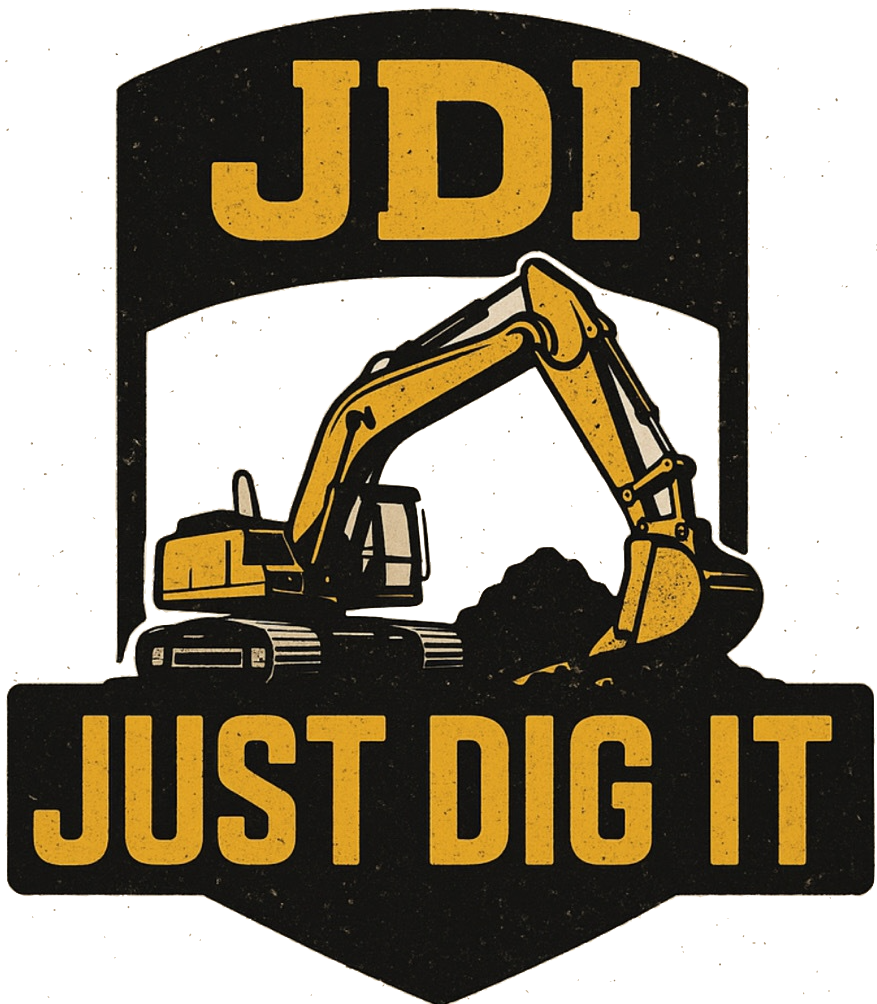What to Expect During a Utility Trenching Project
Trenching might look simple—dig a hole, lay a pipe, fill it back in—but there’s a lot more going on beneath the surface. Whether you're installing new utility lines or replacing old ones, a trenching project involves precise planning, safety measures, and coordination with multiple parties.
At Just Dig It, we’ve completed trenching projects for everything from backyard sewer lines to large commercial storm drains. In this post, we’ll walk you through what to expect during a typical utility trenching project so you know how it works, why each step matters, and how to prepare.
What Is Utility Trenching?
Utility trenching is the process of digging a narrow, deep channel in the ground to install underground infrastructure. This can include:
- Water lines
- Sewer lines
- Storm drains
- Electrical conduits (in coordination with electricians)
- Irrigation or gas lines (when required)
The trenches must be dug to specific depths and slopes depending on the type of line, local building codes, and soil conditions. Once the utilities are installed, the trench is backfilled and compacted to avoid settling and surface damage.
Step-by-Step Breakdown of a Trenching Project
Here’s what a typical utility trenching project looks like from start to finish:
Step 1 – Site Evaluation & Planning
Every project starts with a walkthrough of the site. During this phase:
- We review construction plans or work with the homeowner’s objectives
- Determine trench path, depth, and exit points
- Identify potential obstacles (trees, sidewalks, utilities)
- Confirm access for equipment and spoil hauling
Planning is essential to avoid costly changes mid-project.
Step 2 – Utility Location & Marking (Blue Stakes)
Before digging begins, it's critical to mark all existing underground utilities. We coordinate with 811 (Blue Stakes in Utah) to ensure safe digging.
- Gas, electric, cable, and water lines are flagged
- We may also review site plans for private lines or drainage systems
This step ensures we don’t accidentally hit any live lines during excavation—a major safety and legal risk.
Step 3 – Excavation of the Trench
Once utilities are marked, we begin digging:
- Use of mini-excavators or trenchers depending on access and soil
- Trench width and depth follow code and engineering requirements
- Spoils (dirt) are piled alongside or removed from the site
Our focus is on clean cuts, accurate depth, and safe trench walls, especially for deeper trenches requiring slope safety or trench boxes.
Step 4 – Line Installation
We coordinate with the plumber, utility provider, or general contractor for the next step:
- Pipes or conduits are laid to spec
- Bedding materials (gravel, sand) may be used under or around the lines
- Slope is checked for proper drainage if installing sewer or storm lines
Some projects require inspections before backfill—especially if connecting to municipal utilities.
Step 5 – Backfill & Compaction
After the utility line is installed and inspected (if applicable):
- Trench is backfilled with native or imported material
- Layers are compacted as needed to prevent settling
- Final grading matches the existing surface for clean finish
We take care to avoid future sinkholes, surface cracks, or damage to nearby landscaping or concrete.
How Long Does Utility Trenching Take?
Most small residential trenching jobs take 1 to 2 days, depending on:
- Length and depth of trench
- Type of utility
- Access to the site
- Weather and soil conditions
Larger or more complex commercial projects may take several days to a week.
Common Challenges & How We Handle Them
Trenching can reveal surprises—here are a few common issues and how we handle them:
- Unexpected Rock or Debris –
We use specialized equipment or remove obstacles as needed.
- Tight Access Areas –
We bring compact equipment and hand-dig when necessary.
- Rain or Saturated Ground –
We monitor weather and adjust schedules to protect your site.
- Hitting Unmarked Utilities – We avoid this by confirming all 811 markings before any dig begins.
Our job is to keep the project moving, minimize disruption, and leave your property clean and safe.
What to Do Before Your Trenching Contractor Arrives
To help your project run smoothly, here’s how to prepare:
- Confirm utility marking through Blue Stakes (811)
- Clear vehicles or obstacles from the work area
- Discuss connection points with your plumber or GC if applicable
- Notify neighbors
if digging near property lines or shared access
We’ll go over everything with you beforehand so nothing is missed.
Why Hire a Pro for Trenching?
Trenching isn’t just about digging a hole. It requires:
- Knowledge of codes, grades, and safe depths
- The right equipment for your site
- Clean, fast work that won’t delay the next crew
At Just Dig It, we’re known for:
- Quick scheduling
- Clear communication with builders and homeowners
- Clean cuts, smooth backfill, and inspection-ready work
Need Utility Trenching in Utah? Let’s Get Started.
If you’ve got a project that needs trenching for sewer, water, or storm lines, give us a call. We’ll visit your site, walk through your goals, and give you a free estimate—no pressure, no surprises. Call us at (801) 793-5585 or click here to request an estimate.

